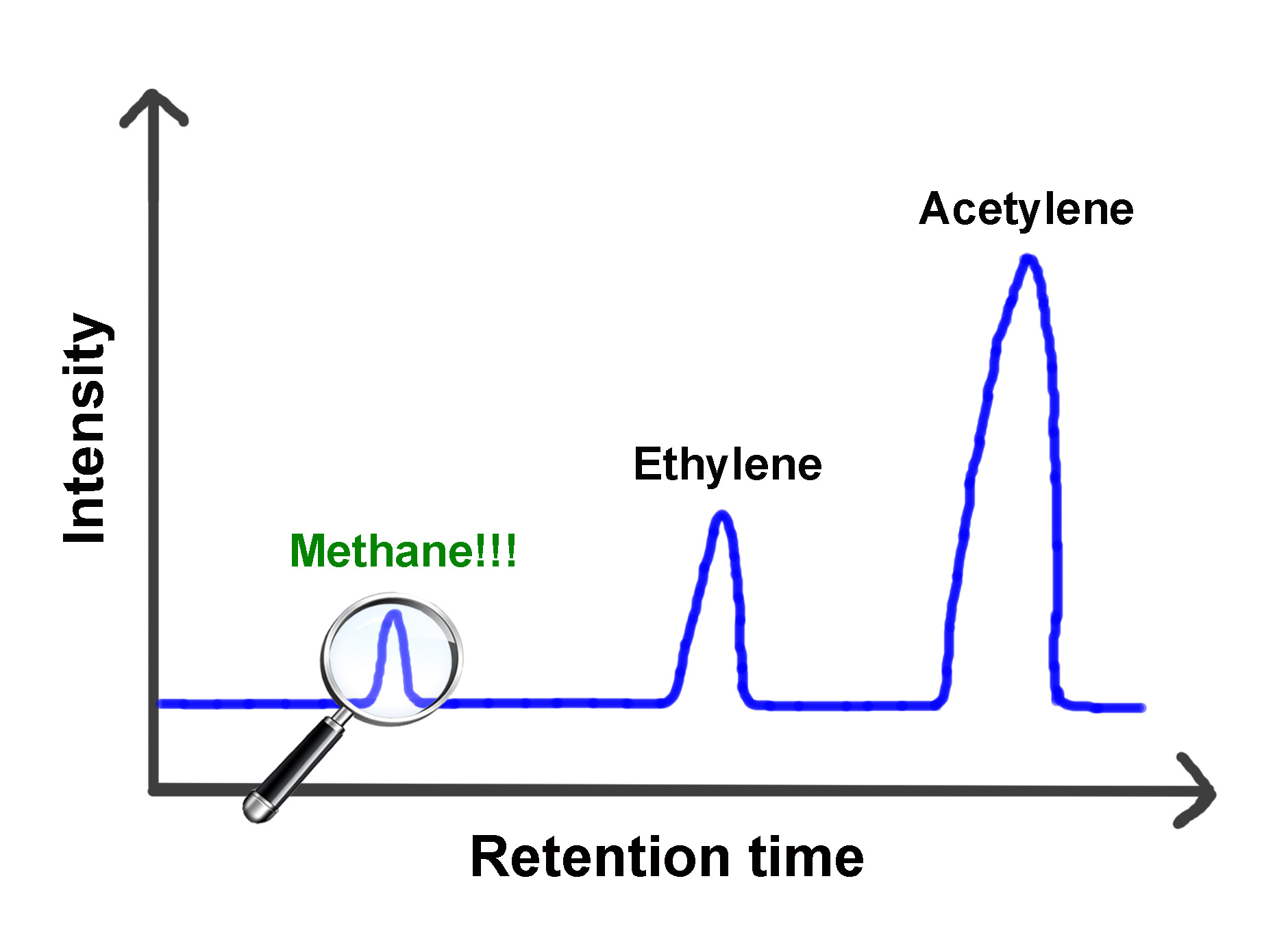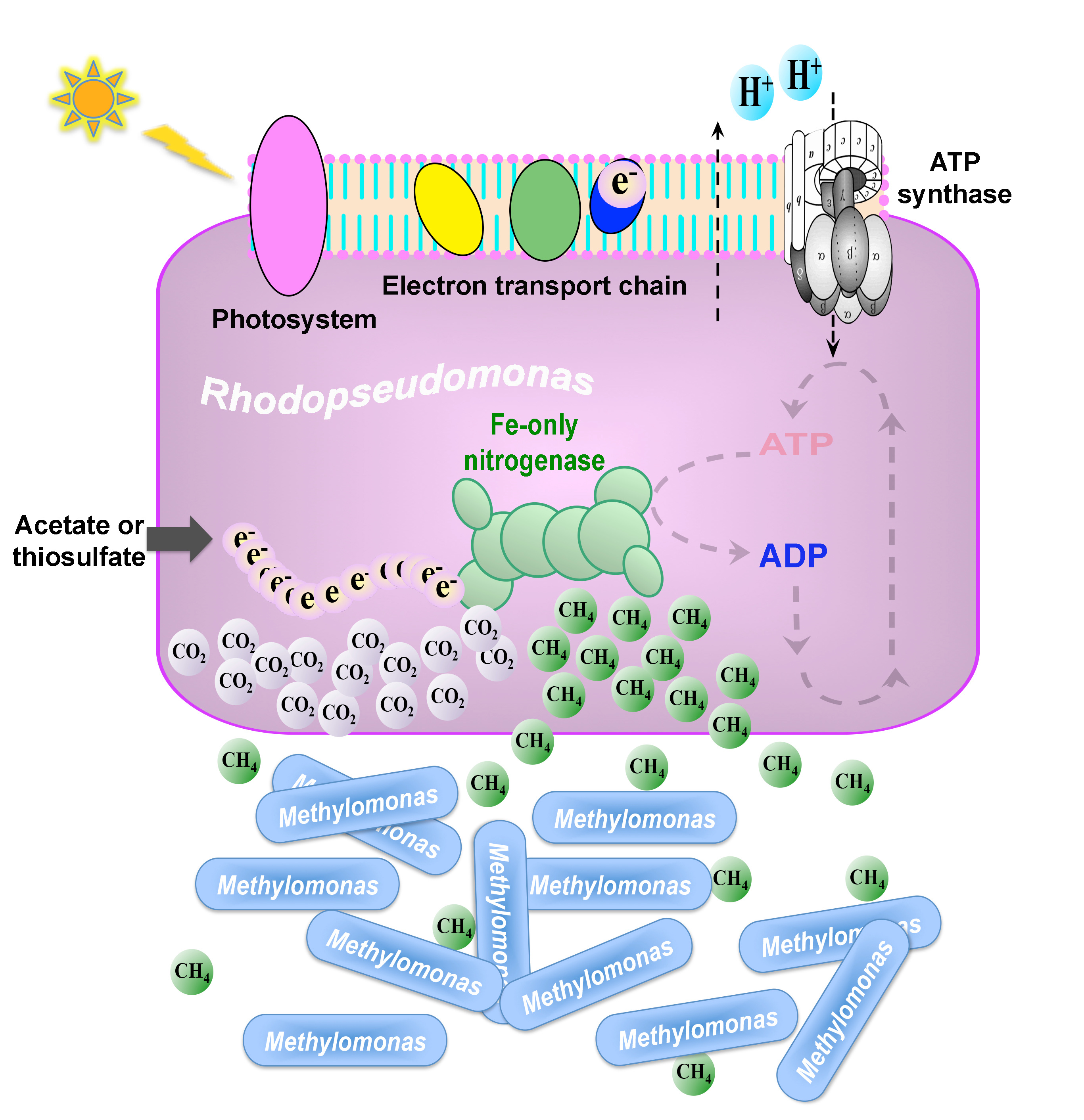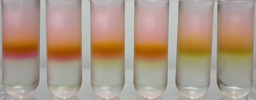Bacteria belch methane while excreting ammonia
Published in Microbiology

The paper in Nature Microbiology is here: http://go.nature.com/2rdo3Cn
Written by Yanning Zheng
This paper describes the unexpected finding that iron-only nitrogenase produces methane along with ammonia, its main product. The amount of methane is small, but it’s enough to allow a methane-utilizing bacterium to grow in co-culture with a bacterium named Rhodopseudomonas palustris (Rpal for short) that is expressing iron-only nitrogenase. I was really excited when I discovered this because it is a potential new source of methane, a major part of the carbon cycle and a major greenhouse gas, in the environment.
Nitrogen–fixation is critical for getting useable nitrogen into the biosphere, but iron-only nitrogenase is not the main nitrogenase that nitrogen-fixing microbes use to convert nitrogen gas to ammonia. The main nitrogenase is molybdenum nitrogenase. Iron–only nitrogenase is considered to be a back-up enzyme that is used when molybdenum is in short supply. It’s been a neglected enzyme and not studied very much. Still, we’ve known about iron-only nitrogenase for a long time - it was discovered in the 1980s.
So, why hadn’t anyone noticed that methane is produced by iron-only nitrogenase before? The answer is that I was looking for methane, although I wasn't looking for it to be produced by iron-only nitrogenase. Typically, nitrogenase is assayed in bacteria by using gas chromatography to measure their ability of convert acetylene gas to ethylene, the so-called acetylene-reduction assay. Acetylene is a proxy for nitrogen gas. If you carry out this assay with an iron-only nitrogenase bacterium like Rpal, then over a typical time course of a couple of hours, there is methane formed, but in such small amounts that it gets swamped out by the acetylene and ethylene peaks (image #1; movie #1). I was looking for conversion of carbon dioxide to methane by a mutant form of iron-only nitrogenase that, for reasons explained in the paper, we thought might make methane. I compared mutant iron-only nitrogenase Rpal cells will wild-type iron-only nitrogenase Rpal cells. I incubated the cells for a long time (days) to let methane build up. It turned out that the wild-type cells made methane, but the mutant cells did not.

This is how I inadvertently discovered a probable new source of methane in Nature. Although the amount of methane produced is it small, it was enough to support the growth of a methane-utilizing bacterium when we grew in co-culture with Rpal (image #2; movie #2). There are numerous examples of enzymes that allow microbes to produce small amounts of “other products”. Maybe we should be paying more attention to these other products and their potential to shape microbial community interactions. We need to also consider, and there is recent evidence for this, that iron-only nitrogenase is active in microbes more often and in more conditions than we previously thought.




Please sign in or register for FREE
If you are a registered user on Research Communities by Springer Nature, please sign in